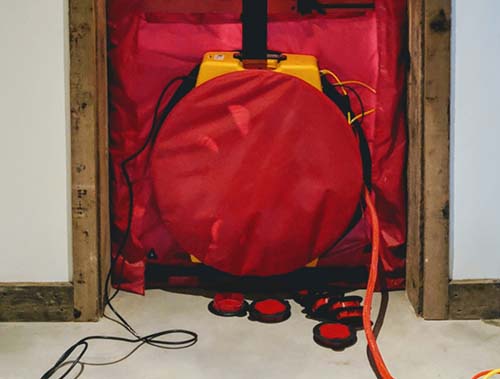Sandy Air Tightness Testing, Licensed by AF-Acoustics
The measurement of air escaping from a building is called air tightness testing. It is also referred to as air permeability testing or air pressure testing. In 2006, Approved Document L was reviewed and building regulations for air permeability became more stringent. The test is presently a requirement for new buildings and reconstructions.





